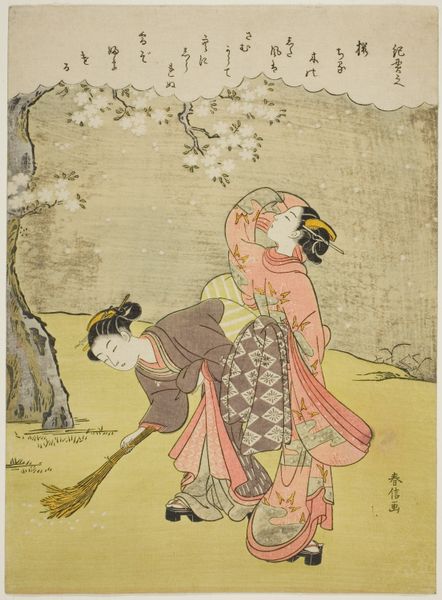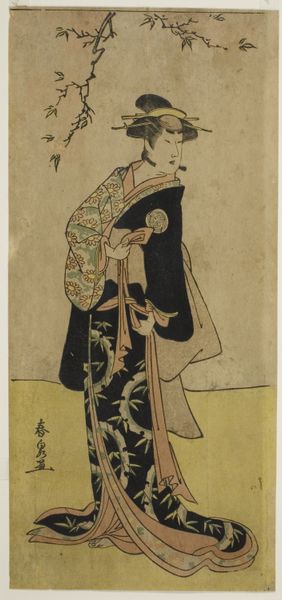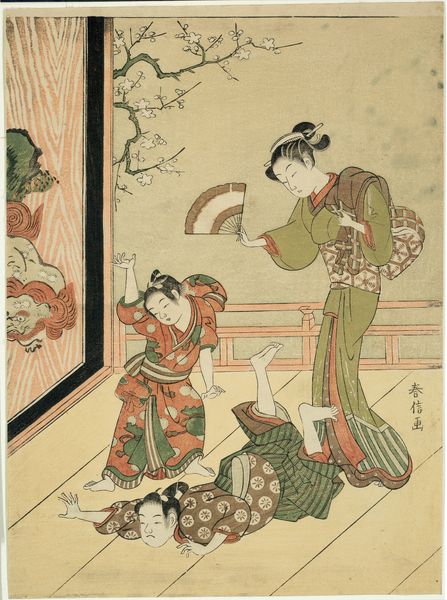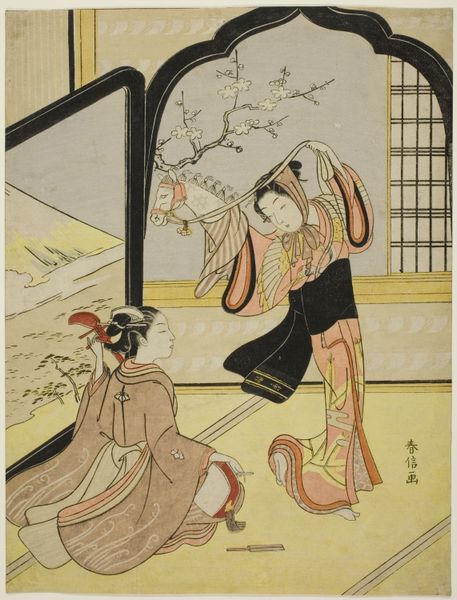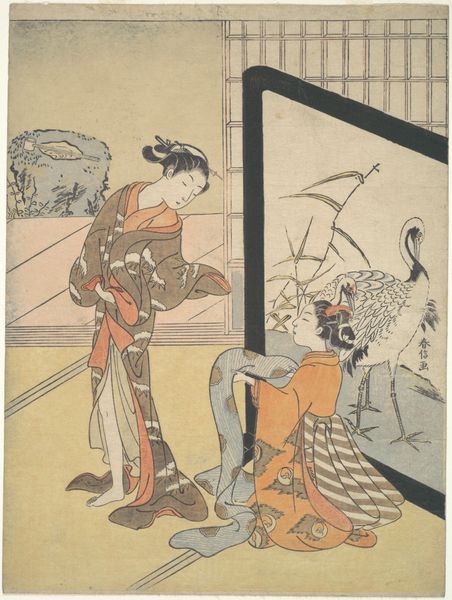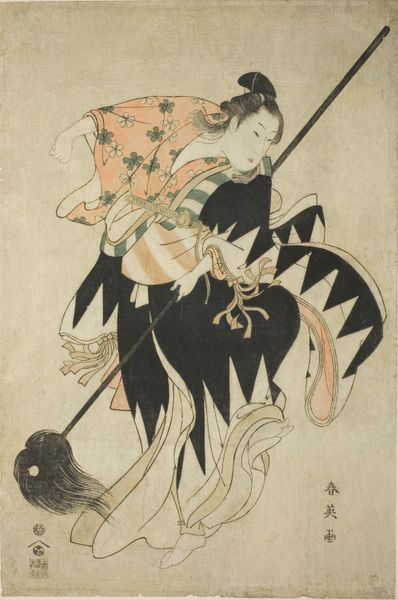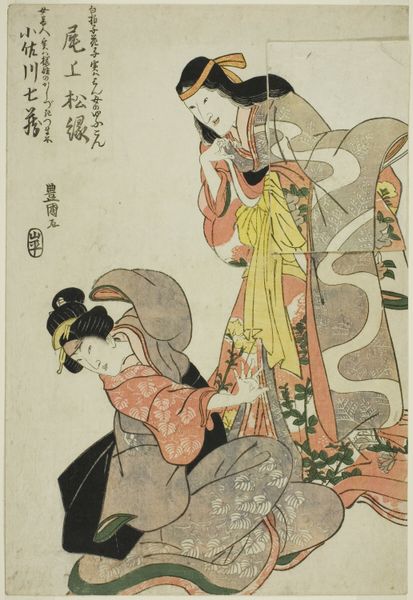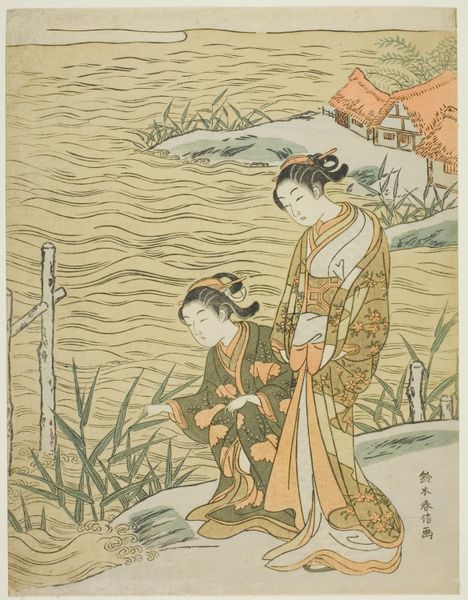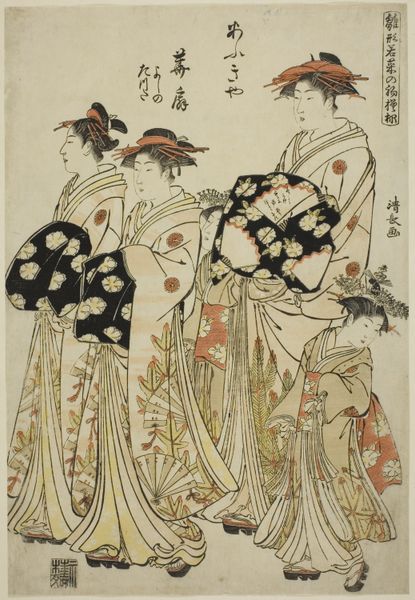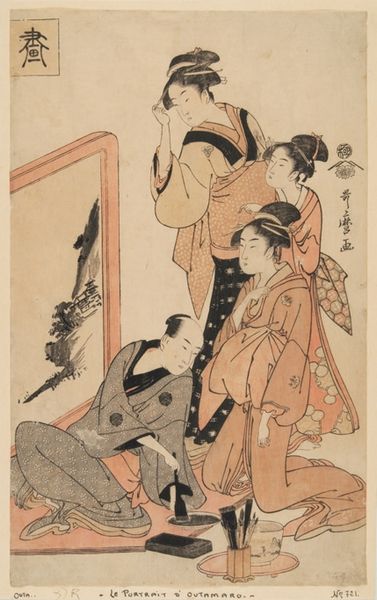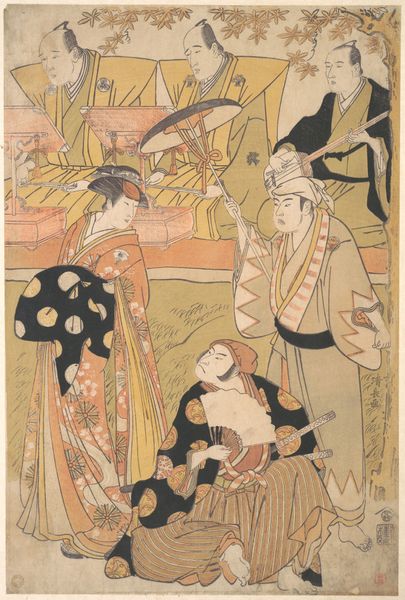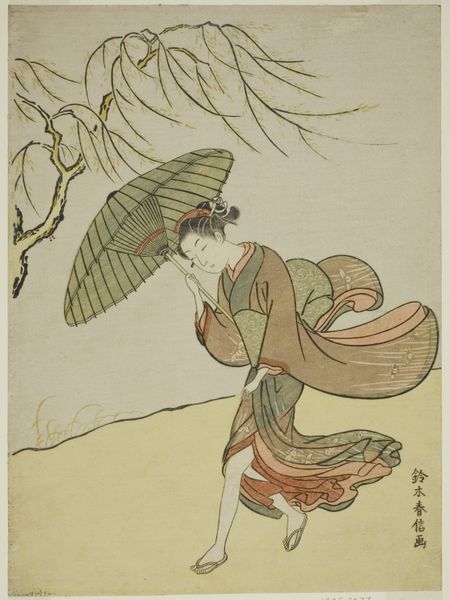
print, woodblock-print
#
portrait
# print
#
asian-art
#
landscape
#
ukiyo-e
#
japan
#
figuration
#
woodblock-print
#
line
#
genre-painting
Dimensions: 10 3/4 × 8 in. (27.31 × 20.32 cm) (vertical chūban)
Copyright: Public Domain
Suzuki Harunobu created this woodblock print, titled "Two Women in the Autumn Wind," around 1768, now held at the Minneapolis Institute of Art. The scene is dominated by two figures whose forms are bent at a severe angle by the wind. The composition features muted greens, creams, and browns, creating a serene yet melancholic mood. Note how the curve of the women's bodies is mirrored by the weeping willow above, creating a visual echo that reinforces the sense of bowing to an external force. The artist has used the linear quality of the woodblock medium to emphasize the flowing lines of the women's robes and hair, which suggests the invisible yet palpable force of the wind. This artwork challenges fixed notions of beauty and composure by portraying figures in a state of disarray, subject to nature's whims. The very act of bending and yielding becomes a statement of resilience, engaging with the philosophical idea of finding strength in flexibility. It prompts us to reconsider the relationship between humans and the natural world.
Comments
minneapolisinstituteofart almost 2 years ago
⋮
In the early 18th century, the artistic genre of bijin-ga (pictures of beautiful women), which had formerly been limited to depictions of prostitutes, expanded to include women of the middle classes, such as housewives and waitresses. Attractive women of no particular standing or status were sometimes catapulted to stardom when depicted by a popular artist. The teahouse waitress Osen, identified by her family crest on her kimono, is shown here on the left. Although similar visual clues for the woman on the right are absent, she is assumed to be the toothbrush shop clerk Ofuji, since other images show the two women together. Both Osen and Ofuji were real women who lived and worked in the city of Edo. Men were charmed by such images because they illustrated women they might actually encounter. Women, on the other hand, used them as practical guides to style and fashion. Harunobu adds element of eroticism by showing Osen's bare leg through a gap in her kimono-the result of a sudden gust of wind. The device recalls contemporary photographers' use of electric fans to blow models' hair and enliven their clothing.
Join the conversation
Join millions of artists and users on Artera today and experience the ultimate creative platform.


